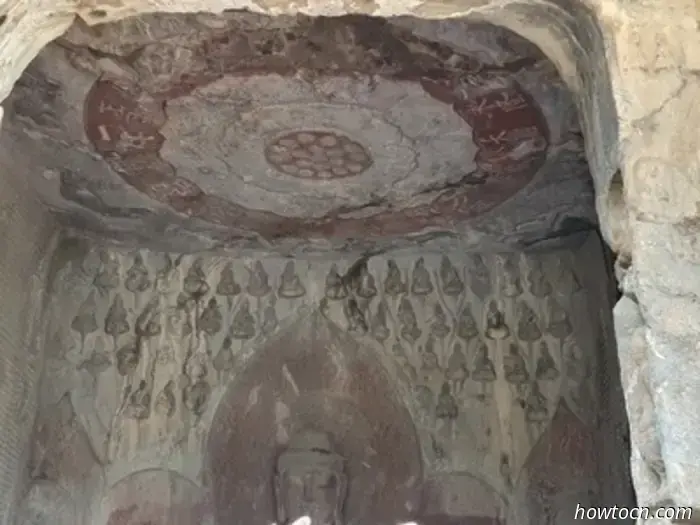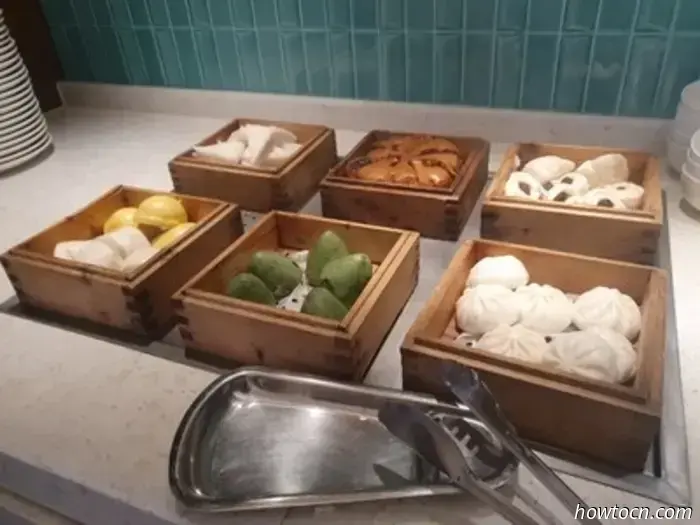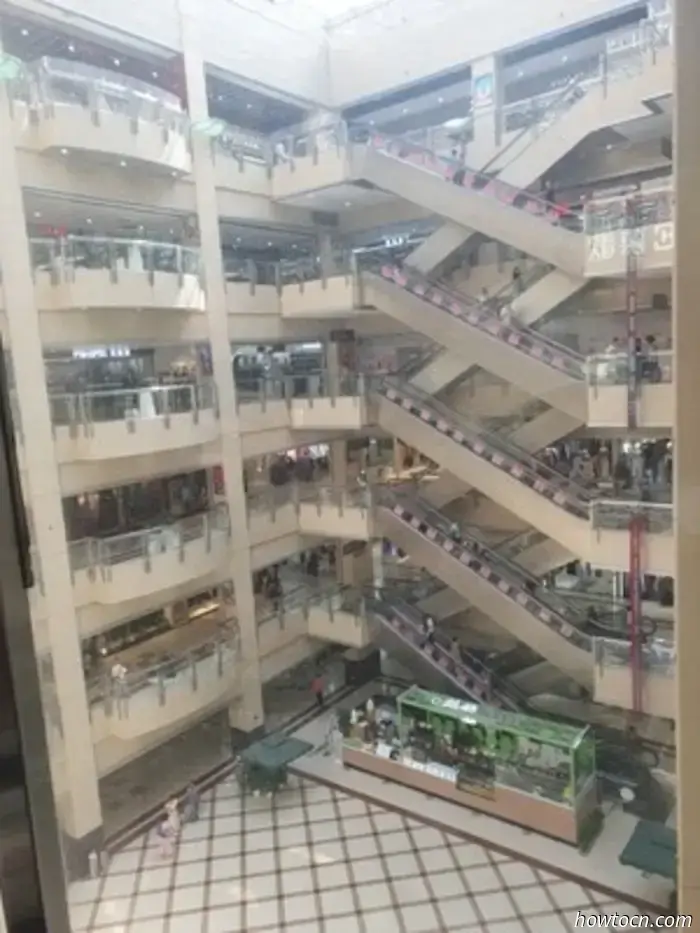
Today marks the last day of the conference, and the organizers have planned a tour for all the attendees. It promises to be enjoyable, fostering camaraderie while also providing the sales team a chance for informal discussions with distributors. We boarded tour buses and met our guide. She began speaking rapidly in Chinese, but we couldn't grasp what she was saying. One of our hosts kindly provided us with a set of wireless earbuds connected to his translation app. It's amusing that Apple highlighted their new i3 translation feature, especially since similar technology was already available here. There might have been a 10-20 second delay compared to theirs, but it was manageable for our needs. However, the translation quality was inconsistent; we managed to get the overall meaning of her words, though there were moments when sentences were confusing or certain terms were obviously misinterpreted, leaving me puzzled about their intended meaning.
The guide talked extensively about Luoyang, the Luo River, and its history, particularly regarding the Longmen Grottoes, detailing the origins of place names in the region. To summarize, Luoyang served as a capital city approximately 1500 years ago, and a Buddhist Emperor who relocated the capital there also initiated the Buddha carvings in the surrounding mountains. She reminded us to apply sunscreen due to the strong sun, yet when we arrived, she didn’t offer us a chance to purchase hats at the gift shop, which I wished I had, especially one like hers (and those of many women present). Her hat featured a wide, round visor and a hole in the back for ponytails or buns, and I thought perhaps I’d find a similar one at another stop.
The Longmen Grottoes are rightfully recognized as a UNESCO World Heritage site, showcasing thousands of Buddhas and other statues intricately carved from solid rock, some being hand-sized while the larger ones tower to several stories. They were sculpted by numerous artists across various dynasties. Yet, they have suffered theft across many eras, and in some areas, remnants of color suggest they were once vibrant, while in others even the faces of the Buddhas have been lost. Furthermore, much of the damage was intentional; historically, the government supported monks, leading impoverished individuals to join monasteries for food and exemption from military service. However, when the numbers swelled, it became financially burdensome and a military concern, prompting the government to destroy some Buddhas and attempt to suppress Buddhism. My colleague noted how reminiscent this was of current events in Israel, where Yeshiva students are similarly perceived as a financial burden while avoiding military duties. The financial struggle between religion and state has echoed throughout history, as seen in 1600s England and continuously in Italy.
As we walked, the guide pointed out a rock that initially made me think she was acting child-like. Upon closer inspection, I saw it bore flower-like imprints not from paint, but rather a natural process between flowers and acid that created this floral pattern on the rock. We passed numerous grottoes and platforms housing various Buddha statues in varying degrees of decay, and while she shared many details about them, we maintained a good pace.
Eventually, we reached the biggest statues. After climbing many stairs to a viewing platform, we beheld enormous, multi-story Buddha statues, each distinct in face and pose, all exquisite. Here, the guide delved deeply into the details of each statue, including the carving techniques used on lips and the meanings behind various facial expressions. One statue sported an unusual pinkie ring that seemed out of place; she explained this arose because a non-Buddhist artist used a model for the initial design, and a non-Buddhist stoneworker carved it, resulting in unintentional errors in cultural representation. Much of what she shared, however, felt overly detailed and lengthy.
After descending and crossing a bridge over the river, we viewed the Longmen Grottoes from a different angle. Having seen them up close, it was quite impressive to realize how many individual carvings were housed within each cavity of stone, especially considering that no explosives or modern tools were utilized in their creation—this made their accomplishment even more remarkable.
I brought sufficient water, but it was hot, so I purchased a limeade from a nearby stand at the tour's end. Given my location in the park after strenuous walking, I suspected it was overpriced. Nevertheless, this refreshing drink, complete with real fruit slices, cost only 10 yuan, or around a dollar and a half—not too bad. The next stop was lunch, again served in a communal style. This time, we shared space with a wedding in another room, though we could only catch faint sounds of celebration. Although tempted to crash the wedding, I was too hungry.
Our lunch consisted of a different spread than before, save for the familiar whole fish with an eye. Though it didn't quite reach the culinary heights of the yucca fried



















Tuesday It feels like we just returned from Estonia, and now I'm heading to China. This trip is for work, so I'm traveling without the children. It's quite a change not having to pack an entire bag just for snacks. I still notice all the child-friendly features (like the low sink at the Bangkok airport that kids can reach), but I don't actually need to use them.

Last night, by the time I returned from the park and began packing, it was already late. Unfortunately, I found that my duffel-style suitcase had ripped while I was packing. It was only the side pockets at the end that were damaged, not the main compartment, but I realized I needed a new bag. If I had been aware earlier, I could have purchased one at the mall. Instead, I did my best to sew up what I could and knew I would have to figure something out today. First, my colleague who was with me suggested taping it up. That was a good idea. He retrieved some clear packing tape from the front desk, and we wrapped it around the damaged areas to secure everything. Then, we thought we would check if the train station had any bags available. Since it was 7 am, nothing else was open anyway. I've always found it amusing to see luggage stores in airports—if I'm here, it's because I have luggage. But perhaps many travelers face broken luggage en route, creating a demand for replacements. Unfortunately, the train station had no shops that sold anything other than food. While my colleague was searching for something, a little girl in a charming shiny Frozen dress approached me to say hello (in Chinese). I responded in kind. She became very excited, which prompted her family to engage with me. Regrettably, my knowledge of Chinese is limited to four words: hello, thank you, no, and water. That left me at a loss for communication. I did manage to use a translation app to tell her parents that I liked her dress, and they conveyed that she was 6. Beyond that, the little girl seemed a bit disappointed by our inability to communicate further. Fortunately, my colleague returned and came to the rescue. We exchanged a few words, and I asked her if she would like to take a picture together. She was thrilled at the idea.
Today marks the last day of the conference, and the organizers have organized a tour for all attendees. It promises to be enjoyable overall, but it also serves as a chance for team bonding, and I'm certain it will provide the sales team an informal opportunity to engage in discussions with the distributors.